Proof-of-Concept Design for MPP Acoustic Absorbers with Elements of Art
Abstract
:1. Introduction
2. Theory and Methods
2.1. Theoretical Background
2.2. Prototyping
2.3. Measurement of Acoustic Absorption Coefficients
3. Results and Discussion
3.1. Sound Absorption Performance of 3D Printed Micro-Perforated Art Sheet
3.2. Influence of Back-Cavity Depth on Sound Absorption Performance
3.3. Broadband Sound Absorption Using Manually Crafted Micro-Perforated Art Sheet
3.4. Theoretical Analysis and Experimental Comparison
3.5. Demonstration of Dotted Arts-Based Absorbers with LED Light
4. Conclusions
Author Contributions
Funding
Institutional Review Board Statement
Informed Consent Statement
Data Availability Statement
Acknowledgments
Conflicts of Interest
References
- Getting Presidential | Presidential Art, Part 3—Ink Rhythm. Available online: https://www.sprouls.com/blog/2015/09/getting-presidential-presidential-art/ (accessed on 15 September 2021).
- Kumar, S.; Bhushan, P.; Bhattacharya, S. Ultrathin Ashoka Chakra like acoustic metastructure as a sound absorber. J. Acoust. Soc. Am. 2018, 143, 1714. [Google Scholar] [CrossRef]
- Kumar, S.; Lee, H.P. The present and future role of acoustic metamaterials for architectural and urban noise mitigations. Acoustics 2019, 1, 590–607. [Google Scholar] [CrossRef] [Green Version]
- Kazuma, H.; Toshiki, H.; Takeshi, O.; Sakagami, K.; Yairi, M.; Harada, S.; Takahashi, S.; Ueda, Y. Implementation experiment of a honeycomb-backed MPP sound absorber in a meeting room. Appl. Acoust. 2020, 157, 107000. [Google Scholar] [CrossRef]
- Sakagami, K.; Kusaka, M.; Okuzono, T.; Kido, S.; Yamaguchi, D. Diffuse-field sound absorption characteristics of a spherical-microperforated space absorber. Acoust. Sci. Technol. 2020, 41, 784–787. [Google Scholar] [CrossRef]
- Kumar, S.; Xiang, T.B.; Lee, H.P. Ventilated acoustic metamaterial window panels for simultaneous noise shielding and air circulation. Appl. Acoust. 2020, 159, 107088. [Google Scholar] [CrossRef]
- Ciaburro, G.; Iannace, G. Numerical Simulation for the Sound Absorption Properties of Ceramic Resonators. Fibers 2020, 8, 77. [Google Scholar] [CrossRef]
- Maa, D.-Y. Theory and design of micro perforated-panel sound-absorbing construction. Sci. Sin. 1975, 18, 55–71. [Google Scholar]
- Cobo, P.; Simón, F. Multiple-Layer Microperforated Panels as Sound Absorbers in Buildings: A Review. Buildings 2019, 9, 53. [Google Scholar] [CrossRef] [Green Version]
- Carbajo, J.; Ghaffari Mosanenzadeh, S.; Kim, S.; Fang, N.X. Sound absorption of acoustic resonators with oblique perforations. Appl. Phys. Lett. 2020, 116, 54101. [Google Scholar] [CrossRef]
- Wang, C.; Cheng, L.; Pan, J.; Yu, G. Sound absorption of a micro-perforated panel backed by an irregular-shaped cavity. J. Acoust. Soc. Am. 2010, 127, 238. [Google Scholar] [CrossRef] [PubMed] [Green Version]
- Kim, K.H.; Yoon, G.H. Absorption performance optimization of perforated plate using multiple-sized holes and a porous separating partition. Appl. Acoust. 2017, 120, 21–33. [Google Scholar] [CrossRef]
- Xu, Z.; He, W.; Peng, X.; Xin, F.; Lu, T.J. Sound absorption theory for micro-perforated panel with petal-shaped perforations. J. Acoust. Soc. Am. 2020, 148, 18–24. [Google Scholar] [CrossRef] [PubMed]
- Gao, N.; Hou, H. Experimental investigation of sound absorption in a composite absorber. Theor. Appl. Mech. Lett. 2021, 58–62, 100221. [Google Scholar] [CrossRef]
- Acoustic Art Panels—GIK Acoustics—Sound Absorbing Wall Art. Available online: https://gikacoustics.eu/product-category/acoustic-art-panels (accessed on 20 September 2021).
- TELL-US Acoustic World Map | Akustikmiljö. Available online: https://www.amacoustics.com/products/tell-us-acoustic-world-map (accessed on 20 September 2021).
- Maa, D.-Y. Potential of microperforated panel absorber. J. Acoust. Soc. Am. 1998, 104, 2861–2866. [Google Scholar] [CrossRef]
- Atalla, N.; Sgard, F. Modeling of perforated plates and screens using rigid frame porous models. J. Sound Vib. 2007, 303, 195–208. [Google Scholar] [CrossRef]
- Kusaka, M.; Sakagami, K.; Okuzono, T. A Basic Study on the Absorption Properties and Their Prediction of Heterogeneous Micro-Perforated Panels: A Case Study of Micro-Perforated Panels with Heterogeneous Hole Size and Perforation Ratio. Acoust. Multidiscip. Digit. Publ. Inst. 2021, 3, 473–484. [Google Scholar] [CrossRef]
- Cox, T.; d’Antonio, P. Acoustic Absorbers and Diffusers: Theory, Design and Application, 3rd ed.; CRC Press: Boca Raton, FL, USA, 2016. [Google Scholar] [CrossRef]
- Kumar, S.; Bhushan, P.; Prakash, O.; Bhattacharya, S. Double negative acoustic metastructure for attenuation of acoustic emissions. Appl. Phys. Lett. 2018, 112, 101905. [Google Scholar] [CrossRef]
- Pinto, V.C.; Ramos, T.; Alves, S.; Xavier, J.; Tavares, P.; Moreira, P.M.G.P.; Guedes, R.M. Comparative failure analysis of PLA, PLA/GNP and PLA/CNT-COOH biodegradable nanocomposites thin films. Procedia Eng. 2015, 114, 635–642. [Google Scholar] [CrossRef] [Green Version]
- Sakagami, K.; Kusaka, M.; Okuzono, T.; Nakanishi, S. The Effect of deviation due to the manufacturing accuracy in the parameters of an MPP on its acoustic properties: Trial production of MPPs of different hole shapes using 3D printing. Acoustics 2020, 2, 605–616. [Google Scholar] [CrossRef]
- Sakagami, K.; Morimoto, M.; Yairi, M. Application of microperforated panel absorbers to room interior surfaces. Int. J. Acoust. Vib. 2008, 13, 120–124. [Google Scholar]
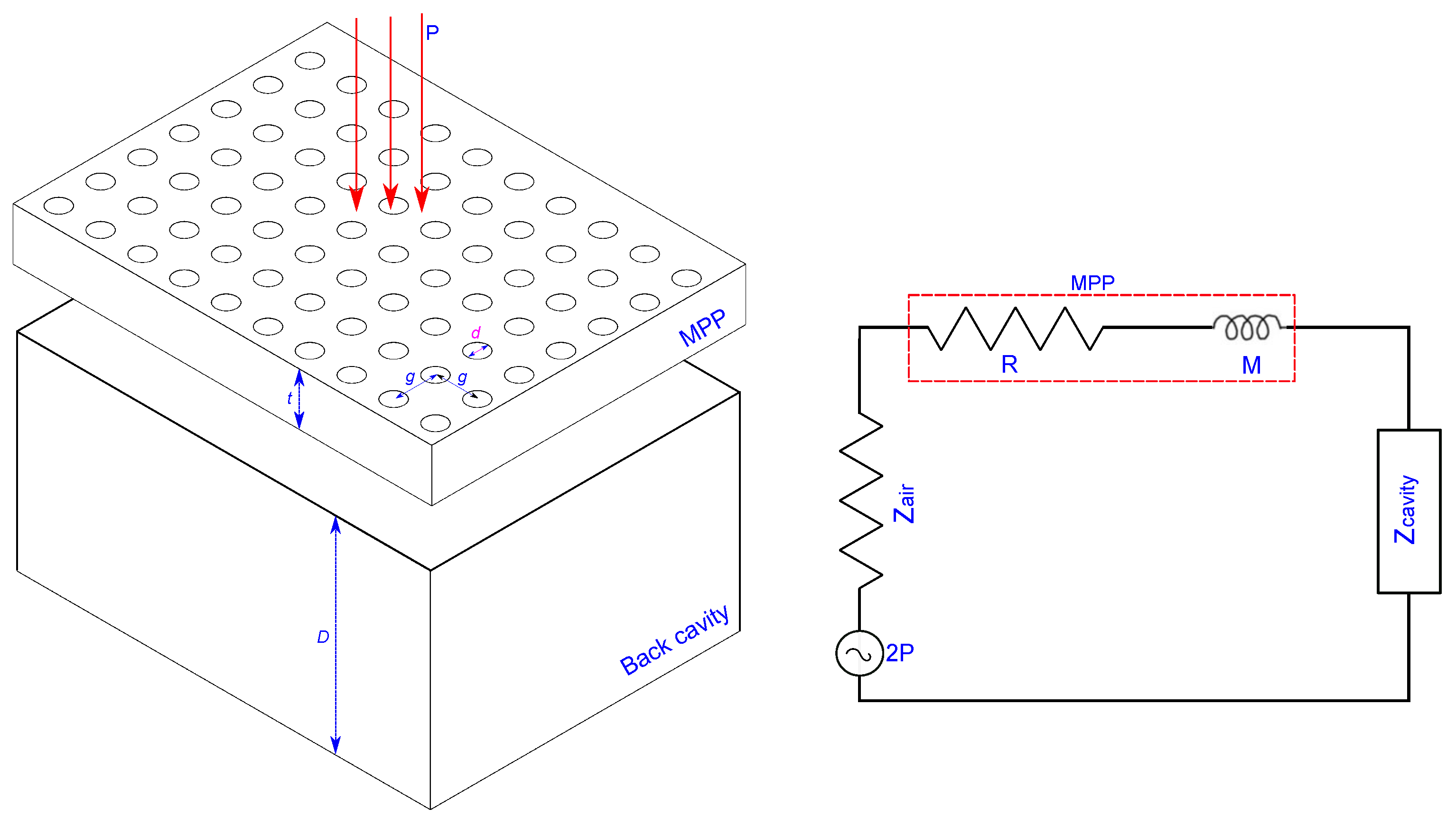


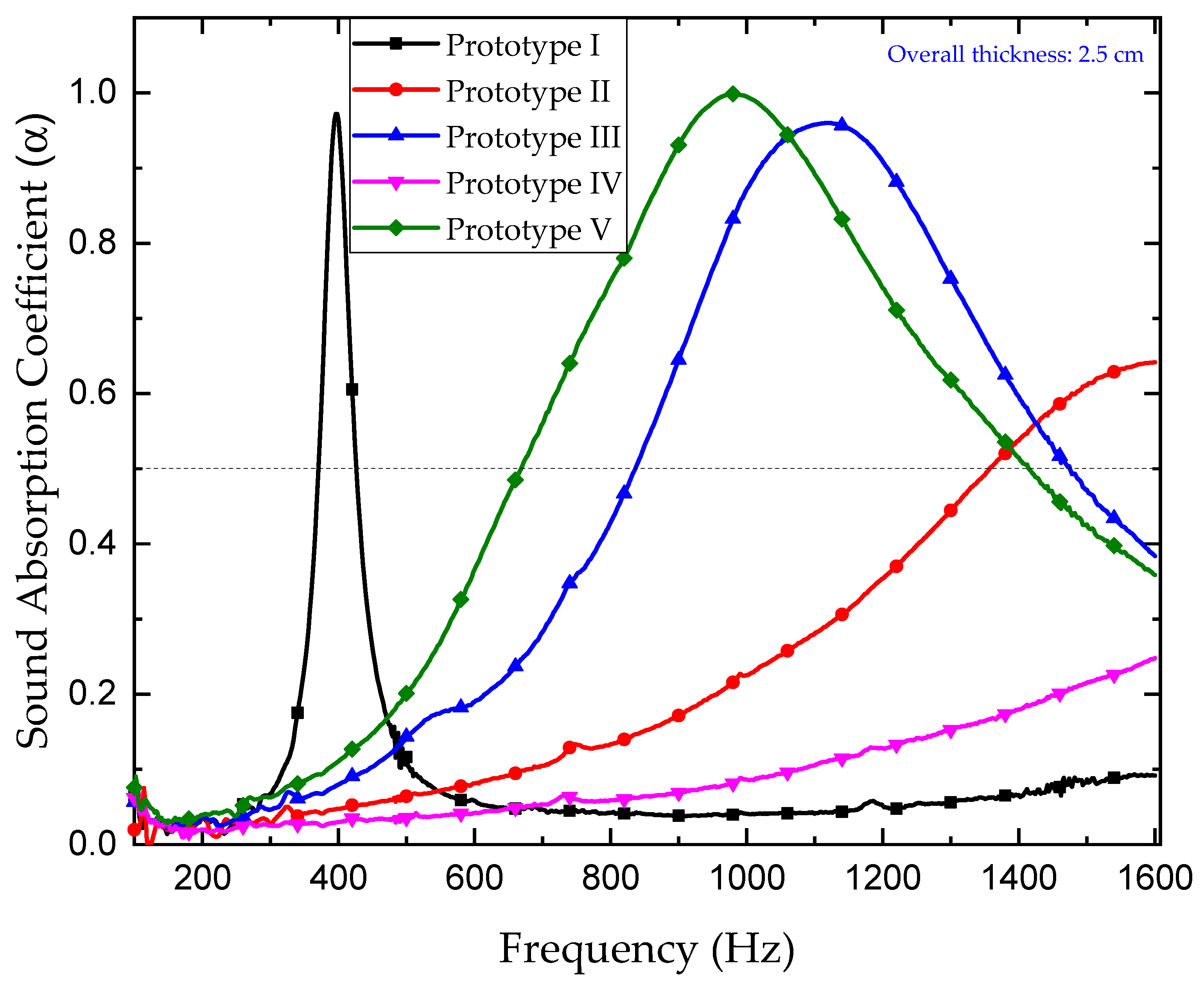
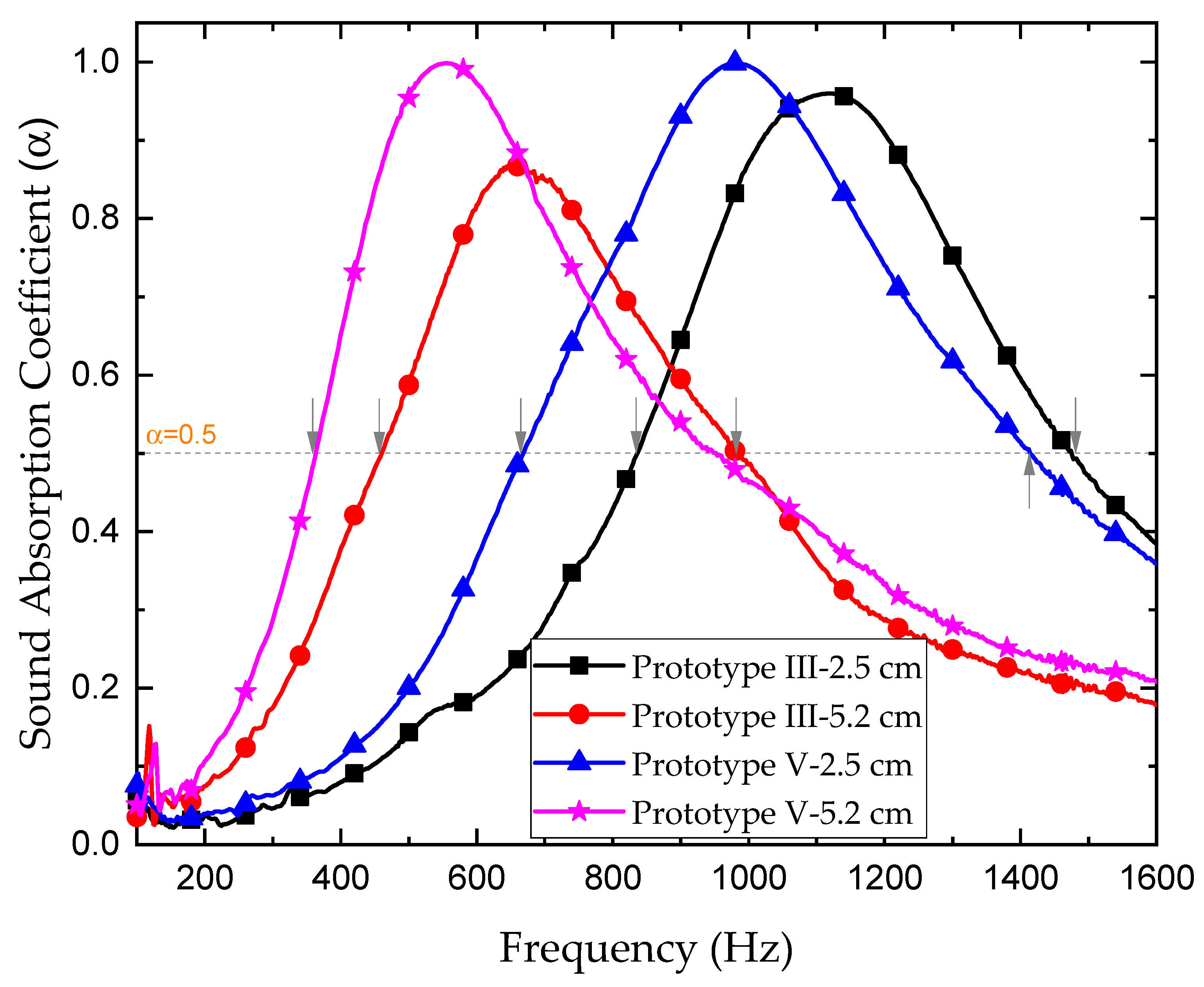
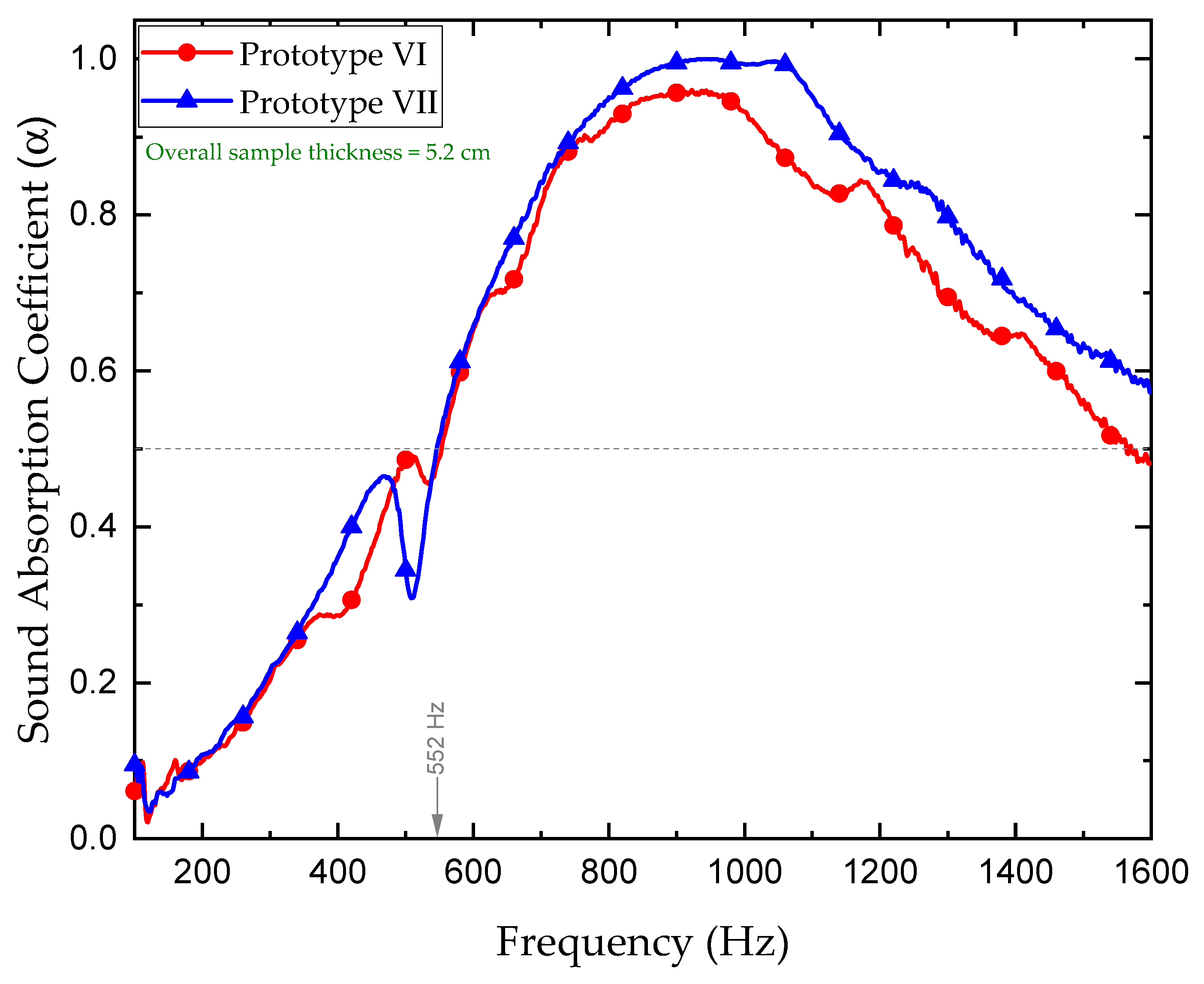

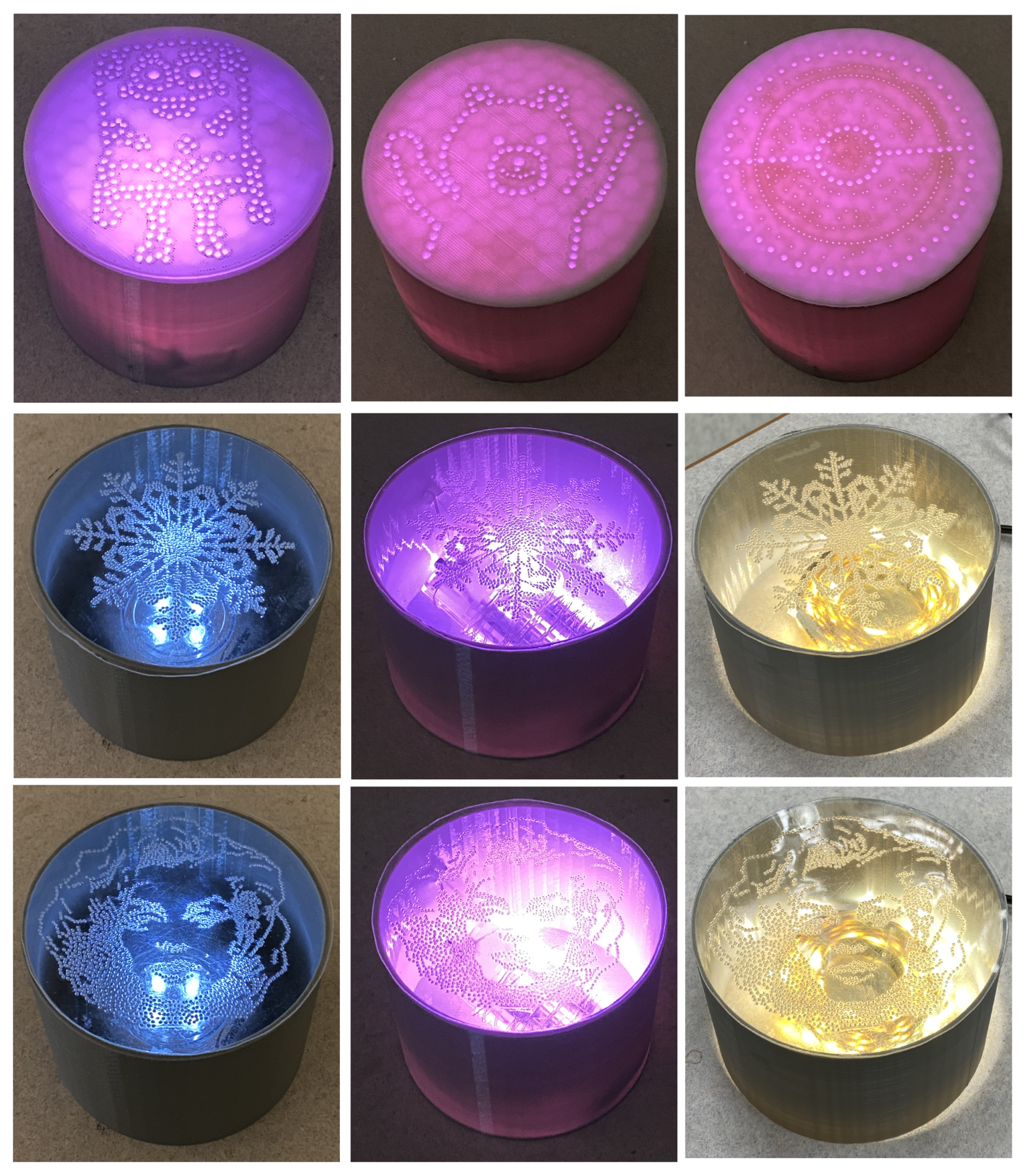
Publisher’s Note: MDPI stays neutral with regard to jurisdictional claims in published maps and institutional affiliations. |
© 2021 by the authors. Licensee MDPI, Basel, Switzerland. This article is an open access article distributed under the terms and conditions of the Creative Commons Attribution (CC BY) license (https://creativecommons.org/licenses/by/4.0/).
Share and Cite
Lee, H.P.; Kumar, S.; Aow, J.W. Proof-of-Concept Design for MPP Acoustic Absorbers with Elements of Art. Designs 2021, 5, 72. https://doi.org/10.3390/designs5040072
Lee HP, Kumar S, Aow JW. Proof-of-Concept Design for MPP Acoustic Absorbers with Elements of Art. Designs. 2021; 5(4):72. https://doi.org/10.3390/designs5040072
Chicago/Turabian StyleLee, Heow Pueh, Sanjay Kumar, and Jie Wei Aow. 2021. "Proof-of-Concept Design for MPP Acoustic Absorbers with Elements of Art" Designs 5, no. 4: 72. https://doi.org/10.3390/designs5040072






